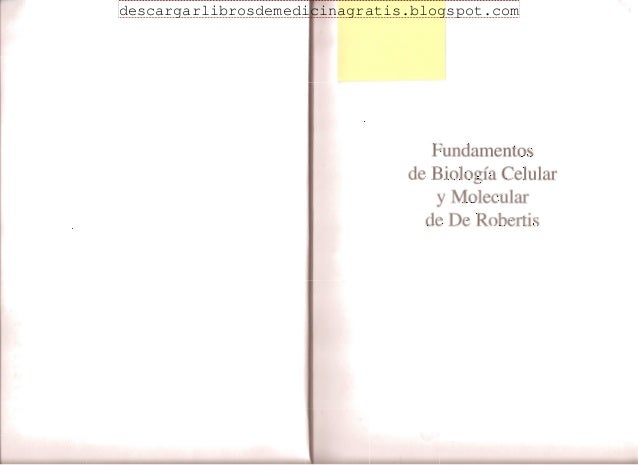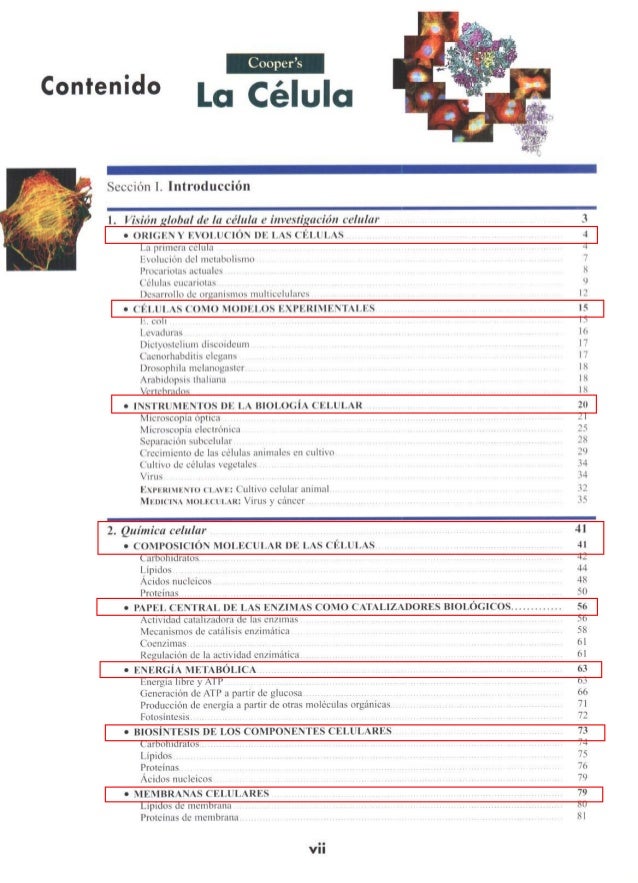Lodish Biologia Celular E Molecular Portugus
Facebook Dsi Chat Facebook Dsi Chatcrack for facebook password recovery masterbest facebook app for samsung galaxy show to hack facebook account id and. Caesar's Vast Ghostby Lawrence Durrell->>>DOWNLOAD BOOK Caesar's Vast GhostCaesar's Vast Ghost book get pdfCaesar's Vast Ghost book MegaCaesar's Vast Ghost read free.
Molecular Cell Biology Fifth Edition Harvey Lodish (Massachusetts Institute of Technology) Arnold Berk (U. Of California, Los Angeles) Paul Matsudaira (Massachusetts Institute of Technology) Chris A. Kaiser (Massachusetts Institute of Technology) Monty Krieger (Massachusetts Institute of Technology) Matthew P. Scott (Stanford U.) Lawrence Zipursky (U. Of California, Los Angeles) James Darnell (Rockefeller U.) ii Summary Molecular Cell Biology provides a clear introduction to the techniques and experiments of scientists past and present, showing how important discoveries led to the formation of the field's key concepts.
Since the publication of the Fourth Edition, fundamental principles have emerged from our understanding of molecular cell biology. This Fifth Edition strives to present these principles clearly while providing essential experimental information. Iii New to this Edition REORGANIZED AND REWRITTEN FOR A MORE DIRECT FOCUS ON CELLS AND CELLULAR SYSTEMS. The new author team has reshaped the text to emphasize just those topics that fall within the scope of the course, presenting them in a logical, teachable organization in seven parts: Chemical and Molecular Foundations Cell Organization and Biochemistry Genetics and Molecular Biology Cell Signalling Membrane Trafficking The Cytoskelon Cell Cycle and Cell-Growth Control In Part I Chemical and Molecular Foundations: New Chapter 1, Life Begins with Cells provides a conceptual overview of the text. Chapter 2, Chemical Foundations focuses on the chemical concepts most relevant to molecular cell biology, and features a new section introducing the cellular building blocks (amino acids, nucleotides, carbohydrates, fatty acids, and phospholipids). Chapter 4, Basic Molecular Genetic Mechanisms, has been restructured to describe the basic mechanisms of transcription, translation, and DNA replication and the molecular machines that carry out these processes.

It introduces the concept of transcriptional control and includes a brief discussion of gene control in bacteria. In Part II, Cell Organization and Biochemistry (Chs. 5 through 8), students get an early introduction to core cell biology topics such as basic cell membranes, structure, and function. Chapter 6, Integrating Cells into Tissues features an earlier, expanded treatment of adhesive cell-cell and cell-matrix interactions, preparing students to think about how cells relate to each other and their immediate surroundings. Chapters on Transport of Ions and Small Molecules Across Cell Membranes and Cellular Energetics appear earlier in the book (Chs. 7 & 8 now; 15 and 16 in the previous edition). In Part III, Genetics and Molecular Biology: Chapter 9, Molecular Genetic Techniques and Genomics offers streamlined coverage of genetic and recombinant DNA techniques (Chs.

7 and 8 in the previous edition). Several examples of DNA microarray analysis to determine genome-wide expression patterns are presented here and throughout the book. Chapters 11 and 12, Transcriptional Control of Gene Expression and Post-Transcriptional Gene Control and Nuclear Transport, now focus on eukaryotic cells.
Coverage of prokaryotic gene control has been shifted to Chapter 4. In Part IV, Cell Signaling, the new edition provides expanded treatment of signaling systems and their integration within the whole cell/organism, with chapters on Signaling at the Cell Surface (Ch.
Biologia Celular E Molecular
13), Signaling Pathways That Control Gene Activity (Ch. 14), and Integration of Signals and Gene Controls (Ch. 15) In Part V, Membrane Trafficking: Chapters on Moving Proteins into Membranes and Organelles (Ch. 16) and Vesicular Traffic, Secretion, and Endocytosis (Ch.
17) offer an expanded introduction to protein sorting (a single chapter in the previous edition) New Chapter 18, Metabolism and Movement of Lipids provides expanded coverage of an often-overlooked class of macromolecules, plus an elegant case study of the two-way interplay between basic molecular cell biology and medicine. In Part VII, Cell Cycle and Cell-Growth Control Regulating the Eukaryotic Cell Cycle is now Chapter 21 immediately preceding the chapter on cell birth, lineage, and death. This chapter contains a new section on molecular mechanisms that permit cells to undergo meiosis rather than mitosis.
New Chapter 22, Cell Birth, Lineage and Death emphasizes the general role of asymmetric cell division in early development, includes new coverage of C. Elegans cell lineage, and describes cell-type specification in yeast and muscle (from fourth edition Chapter 14). Iv OTHER CONTENT REORGANIZATIONS Some topics on DNA replication, repair, and recombination (formerly a separate chapter) are now incorporated in other chapters where they fit naturally: DNA replication is covered in Basic Molecular Genetic Mechanisms (Ch. 4) DNA damage and repair is covered in Cancer (Ch. 23) Coverage of topoisomerases and mechanisms of recombination has been substantially reduced and incorporated into other chapters where relevant. Material on gene control and development (fourth edition Chapter 14) and cell interactions in development (fourth edition Chapter 23), has been refocused to emphasize how studies in development inform our understanding of basic cell processes. This material has been placed in several appropriate chapters in the Fifth Edition (Chapters 6,14, 15, and 22.) Material on nerve cells (fourth edition Chapter 21) is now covered in Chapters 7 and 17, along with other ion-transport and vesicle-trafficking processes.
SIGNATURE FOCUS ON EXPERIMENTS ENHANCED Molecular Cell Biology doesn't just catalog concepts. It provides a clear introduction to the techniques and experiments of scientists past and present, showing how important discoveries led to the formation of the fields key concepts. The authors' commitment to providing students with an experimental focus continues to drive the narrative wherever possible in this fifth edition. As well, new ways of presenting the experimental approach to student include: Students answer a research question by looking at real experimental data in new Analyze the Data problems that conclude each chapter.
In addition to these problems, the Fifth Edition includes real data throughout, wherever possible. Updated Perspectives for the Future, at the conclusion of each chapter which explore potential applications of future discoveries and unanswered questions that lie ahead for researchers. Titles for experimental figures have been rewritten to emphasize the experimental results. NEW WAYS OF SEEING MOLECULAR CELL BIOLOGY Given the importance of visuals in cell biology, the Fifth Edition offers the following innovations to the art and media program: New Overview Figures throughout provide the reader with an overview of the details to come.

New pairing of diagrams with micrographs make as clear as possible for the student what they are seeing in the real image. Many more stepped-out figures illustrate important concepts More consistent schematic depictions of structures and processes within and across chapters Improved treatment of structural data through the consistent presentation of molecular models across the text Expanded video resource library, with many new videos for instructors to use in lectures. V Media WEB Companion Web Site at www.whfreeman.com/lodish For students, the site serves both as a free, 24-hour-a-day virtual study guide and as a bridge to the working. 1.